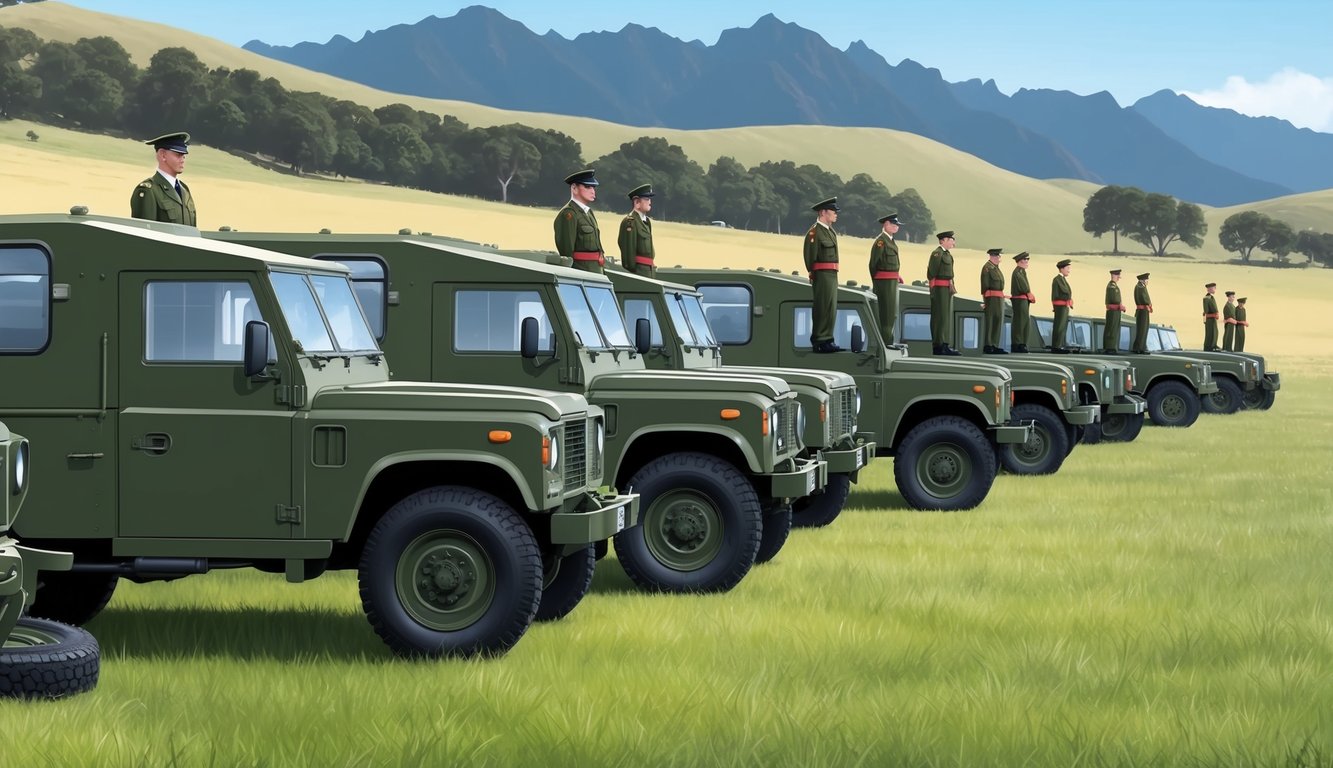New Zealand’s military, known as the New Zealand Defence Force (NZDF), is essential in safeguarding the country’s interests and participating in global security initiatives.
Although the NZDF is relatively small, it has built a strong reputation for professionalism and effectiveness through its peacekeeping and humanitarian missions around the globe.
**The NZDF is composed of three branches: the Royal New Zealand Navy, the New Zealand Army, and the Royal New Zealand Air Force.** Together, they strive to ensure national security in Aotearoa and support international endeavors.
While New Zealand’s military may not have a vast number of personnel or budget, it prioritizes maintaining a highly trained force equipped with advanced technology to tackle the specific challenges of an island nation in the South Pacific.
As you delve into the intriguing dynamics of New Zealand’s military, you’ll learn how this capable force has adapted to shifting global landscapes and regional security demands.
From its roots in Māori warrior customs to its present-day responsibilities in cybersecurity and disaster relief, the NZDF continues to progress to meet the needs of the 21st century.
### Key Takeaways
– The NZDF is made up of three branches collaborating to secure New Zealand’s interests.
– Emphasizing training quality and modern technology, New Zealand’s military values substance over size.
– The NZDF plays a crucial role in peacekeeping, humanitarian missions, and supporting regional security.
### Origins and Military History
New Zealand’s [military history](https://sucharmy.com/best-books-on-military-strategy-tactics-and-history/) stretches back centuries, evolving from tribal skirmishes to a contemporary defense force.
The country’s strategic location and colonial history have significantly influenced its military evolution and international engagements.
#### Colonial Era and New Zealand Wars
During the early colonial days, conflicts between Māori and European settlers escalated into the New Zealand Wars, with the Flagstaff War of 1845-1846 serving as the first significant battle.
As tensions mounted, the Colonial Defence Force was established in 1862 to safeguard settlements.
The Armed Constabulary, formed in 1867, took on policing and [military roles](https://sucharmy.com/best-military-uniforms-and-camouflage-clothing/), and was instrumental during the Hutt Valley Campaign and other conflicts.
The Militia Act of 1858 mandated service for all able-bodied men, resulting in the establishment of a Permanent Militia for the colony’s defense.
#### World Conflicts and Peacekeeping Roles
You may be surprised to learn that New Zealand has been involved in numerous global conflicts.
A pivotal moment for the nation’s [military identity](https://sucharmy.com/best-wall-art-with-military-themes/) was the Gallipoli Campaign in World War I, followed by significant contributions in World War II across Europe, North Africa, and the Pacific.
In the post-war era, New Zealand embraced a strong role in peacekeeping.
The country has participated in numerous United Nations missions, emphasizing its commitment to global stability.
The 1951 ANZUS treaty aligned its defense interests with Australia and the United States, though this relationship later evolved.
#### Evolution of Defence Legislation
New Zealand’s defense forces have seen substantial legislative transformations over time.
The transition from colonial militia to a professional military was gradual.
The Defence Act of 1909 laid the foundation for a modern military framework.
Subsequent acts refined the structure and roles of the armed forces, including the official establishment of the Royal New Zealand Air Force in 1937, which completed the triad of army, navy, and air force functions.
Recent legislation emphasizes adaptability to new global challenges, focusing on swift responses to peacekeeping, disaster relief, and anti-terrorism operations.
This evolution reflects New Zealand’s changing role in regional and global contexts.
### Organizational Structure
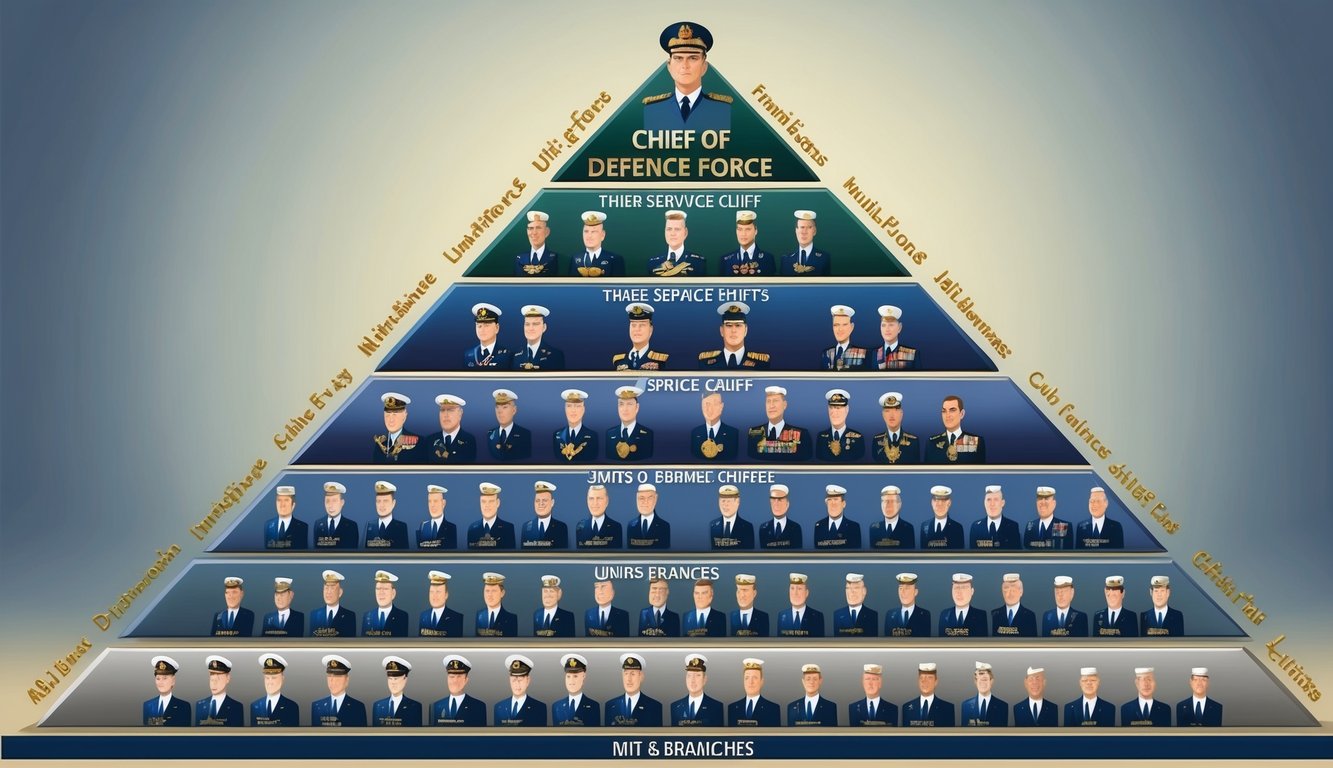
The NZDF has a carefully structured organization to fulfill its mission of ensuring the safety of Aotearoa New Zealand.
It features a blend of military and civilian roles distributed across several branches and specialized units.
#### Leadership and Command
At the helm of the NZDF is the Governor-General, who serves as Commander-in-Chief.
The Minister of Defence oversees overall defense policy, while the Chief of Defence Force manages daily operations.
These leaders collaborate to steer the NZDF’s strategic direction, with each branch having its own chief, such as the Chief of Navy or Chief of Army, ensuring both civilian control and operational effectiveness.
#### Branches of the Defence Force
The NZDF consists of three primary branches:
1.
Royal New Zealand Navy (Te Taua Moana)
2.
New Zealand Army (Ngāti Tumatauenga)
3.
Royal New Zealand Air Force (Te Tauaarangi o Aotearoa)
Each branch possesses its unique structure.
For instance, the Army includes the Land Component Command and Army General Staff, while the Navy organizes into groups such as the Military Hydrographic Group and Logistics Support Group.
These branches often collaborate during joint operations, with personnel from different services frequently working together on missions or exercises.
#### Special Operations and Support Units
Beyond the main branches, the NZDF has specialized units designed for specific tasks.
The Special Operations Component Command is responsible for high-risk missions and counter-terrorism operations.
The Joint Support Group offers logistical and administrative support across all branches, streamlining operations for improved efficiency.
The Military Personnel branch oversees recruitment, training, and career development, ensuring the NZDF has skilled individuals in appropriate roles.
These specialized units provide flexibility for the NZDF to respond to a diverse array of situations, from [humanitarian aid](https://sucharmy.com/best-military-survival-guides/) to combat operations.
### Personnel and Training
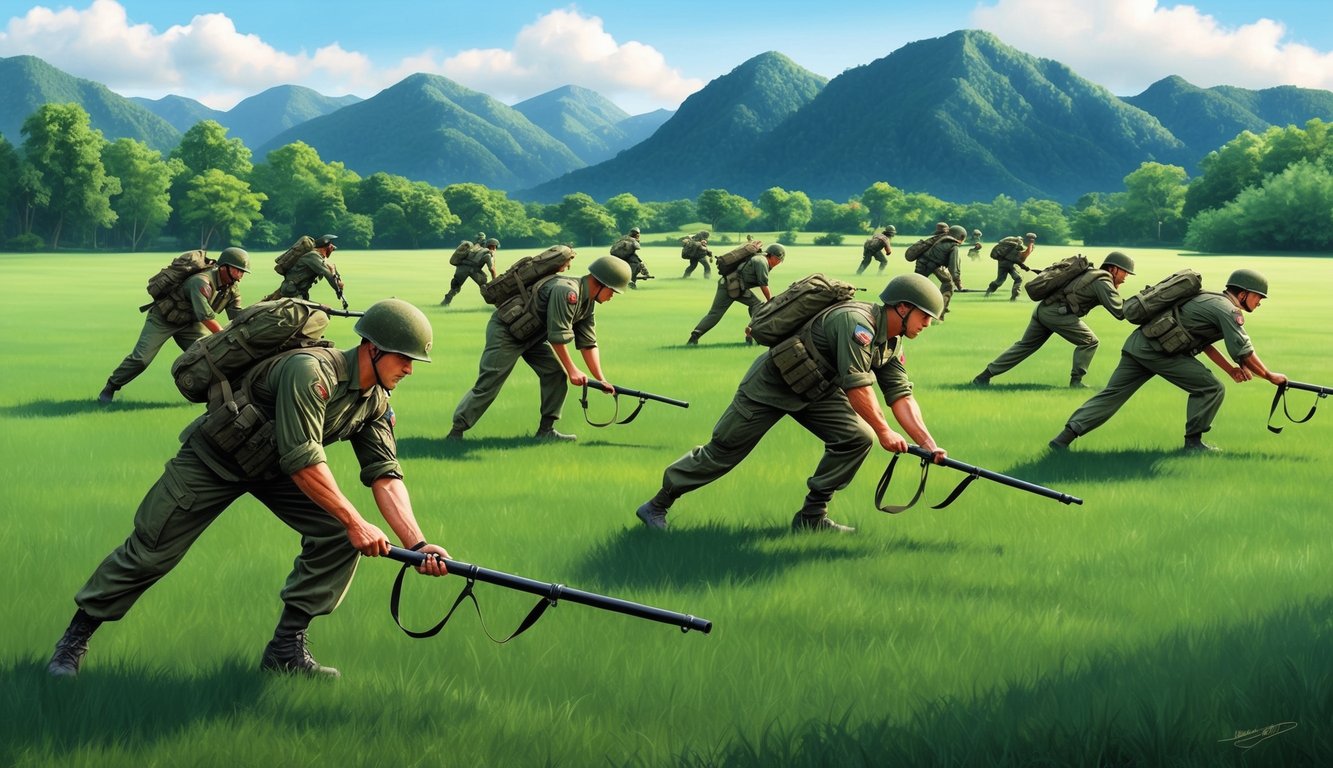
The NZDF ensures a skilled and capable workforce through comprehensive recruitment, training, and educational initiatives.
A variety of personal and professional development opportunities exist within the military.
#### Recruitment and Military Ranks
Joining the New Zealand military begins as either an enlisted member or an officer.
The Regular Force constitutes the core of full-time personnel, with recruitment prioritizing diverse talent for various roles across the Army, Navy, and Air Force.
The military ranking structure is hierarchical:
– Enlisted: Private to Warrant Officer
– Officers: Second Lieutenant to General
Promotions are merit-based and linked to experience and leadership potential, increasing responsibilities as one progresses through the ranks.
#### Individual and Collective Training
Your military journey starts with [basic training](https://sucharmy.com/best-manuals-on-military-training-and-survival-skills/), imparting essential skills and military discipline.
This phase usually lasts several weeks and covers [physical fitness](https://sucharmy.com/best-guides-to-military-fitness-programs/), weapons handling, and military protocols.
Specialized training follows, tailored to your selected role:
– Combat roles: Advanced tactics and weapons systems
– Technical roles: Specific trade skills (e.g., engineering, communications)
– Support roles: Logistics, administration, medical services
Collective training exercises enhance teamwork and operational readiness, featuring joint exercises with other units and international partners that simulate real-world scenarios.
#### Educational Facilities and Doctrine
The NZDF operates several educational institutions to foster continuous learning and development:
1.
Command and Staff College: Advanced leadership training for senior officers
2.
Defence Technology Agency: Research and development center
3.
Defence College: Offers professional military education courses
Training doctrine emphasizes adaptability, critical thinking, and ethical decision-making, with continuous learning opportunities throughout your career, including:
– In-service courses
– Civilian qualifications
– International exchanges
The military also promotes further education, providing study assistance and scholarships for relevant degrees and certifications.
### Military Equipment and Technology
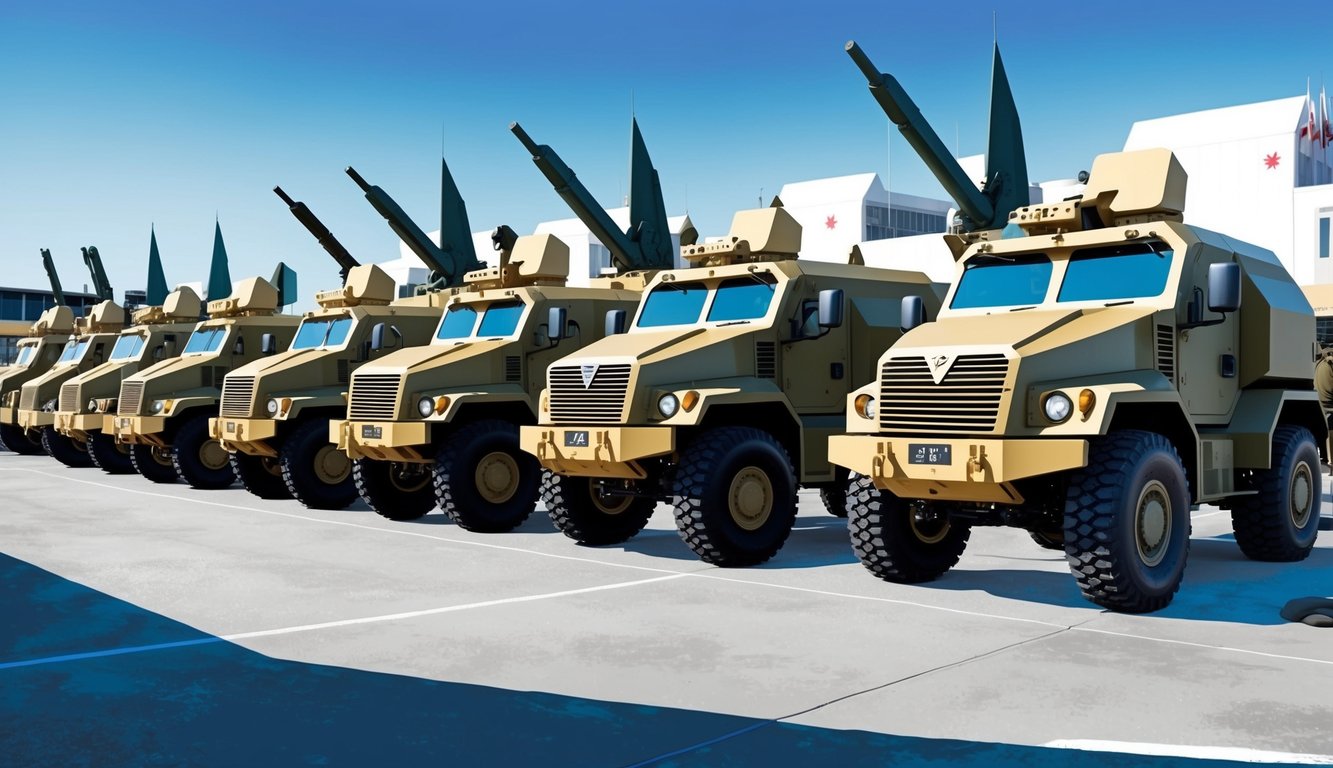
New Zealand’s armed forces are equipped with a wide range of modern technologies and equipment, with ongoing efforts to upgrade and enhance defense capabilities across land, sea, and air domains.
#### Land Forces Armaments
The New Zealand Army is outfitted with various firearms and vehicles.
The standard-issue rifle is the LMT MARS-L, which has replaced the older Steyr AUG.
For support, troops utilize the FN Minimi light machine gun and Barrett M107A1 sniper rifle.
For ground operations, the army primarily uses the NZLAV (New Zealand Light Armoured Vehicle), which provides mobility and protection for infantry.
The [Bushmaster Protected Mobility Vehicle](https://sucharmy.com/best-body-armor-and-protective-gear/) serves as a troop carrier, designed to withstand ambushes and mine blasts.
Artillery support is provided by the L119 Light Gun, a 105mm towed howitzer, while mortar teams employ the L16A2 81mm mortar for indirect support.
#### Naval Fleet and Capabilities
New Zealand’s navy has a small yet capable fleet, primarily composed of two ANZAC-class frigates: HMNZS Te Kaha and Te Mana.
These versatile vessels are suitable for several missions ranging from combat to humanitarian assistance.
Coastal patrol and resource protection are managed by the Protector-class offshore patrol vessels, tasked with monitoring New Zealand’s extensive maritime territory.
The fleet’s newest asset is HMNZS Manawanui, a diving support and hydrographic survey vessel, enhancing underwater operation capabilities.
The navy doesn’t operate submarines, emphasizing surface vessels and maritime patrol aircraft for its defense strategies.
#### Air Warfare and Aircraft
The Royal New Zealand Air Force employs a combination of fixed-wing and rotary aircraft.
For maritime patrol, the P-3K2 Orion is in service, with plans to transition to the more sophisticated P-8A Poseidon.
Transport operations are conducted by C-130H Hercules, with upcoming integration of the C-130J Super Hercules for enhanced support in military operations and humanitarian efforts.
For tactical airlift, NH90 helicopters are utilized, capable of transporting troops and equipment in diverse conditions.
#### Modernization and Equipment Acquisitions
New Zealand is actively working to modernize its military equipment while maintaining a relatively compact force structure.
Recent additions include Special Operations Vehicles intended for army special forces, advancing rapid deployment capabilities.
The air force plans the acquisition of new maritime patrol and transport aircraft, significantly enhancing its operational capacity.
Naval modernization efforts involve upgrading ANZAC frigates and introducing additional support vessels, bolstering New Zealand’s operational capabilities in its extensive maritime domain.
Future initiatives may entail new [armored vehicles](https://sucharmy.com/best-military-vehicle-maintenance-tools/) for the army and added patrol vessels for the navy, ensuring New Zealand’s defense capabilities are strong moving forward.
### International Engagement and Security
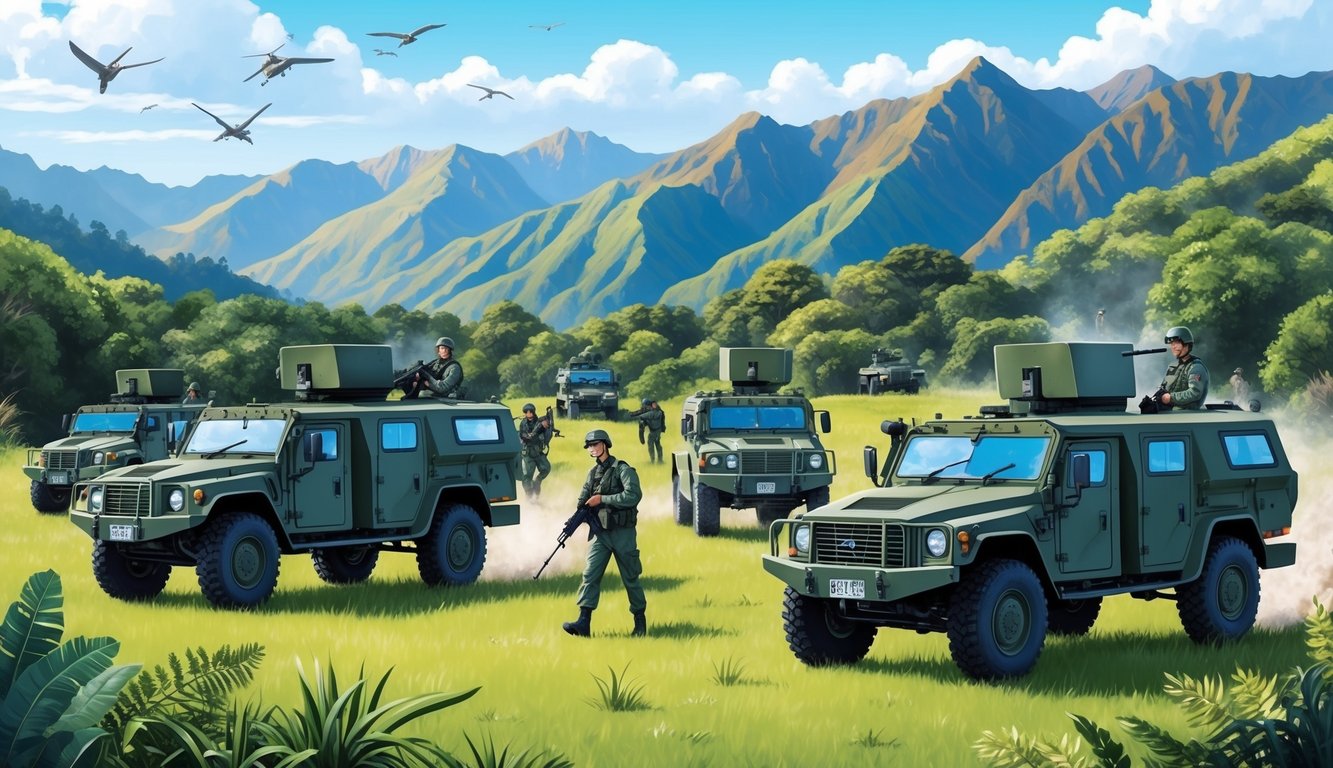
New Zealand’s military is vital in international diplomacy and operational activities, contributing to global peace and regional stability while upholding the rules-based international order.
#### Alliances and Diplomatic Roles
Surprisingly, New Zealand’s military takes on extensive diplomatic responsibilities.
The NZDF engages in numerous international forums and exercises alongside Allied nations.
These collaborations are key to sustaining regional security and fostering cooperative relationships, particularly with Australia, the United States, and other Pacific nations.
New Zealand’s participation in the Five Power Defence Arrangements highlights its commitment to Southeast Asian security, linking New Zealand with Australia, Malaysia, Singapore, and the United Kingdom.
#### Peacekeeping Missions and Humanitarian Efforts
New Zealand’s military boasts a strong legacy of peacekeeping missions, with Kiwi troops having served in several conflict zones worldwide.
NZDF personnel have played roles in UN operations in regions such as:
– East Timor
– Bosnia and Herzegovina
– Afghanistan
These missions focus on restoring peace and safeguarding civilians in conflict-affected areas, with New Zealand’s forces recognized for their professionalism and cultural sensitivity.
Additionally, humanitarian assistance is a significant aspect of the NZDF’s international involvement.
Following natural disasters, New Zealand military assets are often deployed to aid affected regions, providing support to Pacific Island nations like Fiji and Samoa during severe weather events.
#### Contributions to Regional Stability
Within the South Pacific, New Zealand’s military actively contributes to regional stability.
The NZDF undertakes frequent patrols to combat illegal fishing and bolster maritime security.
Historically, New Zealand has played a distinct role in area defense, even welcoming visits from the Imperial Russian Navy in the late 19th century, showcasing its rich tradition of international engagement.
Today, New Zealand emphasizes building capabilities in neighboring Pacific nations through training programs for local defense forces and joint exercises to enhance interoperability, as well as supporting civil defense efforts.
These initiatives foster a more secure and prosperous Pacific, benefiting both New Zealand and its neighboring countries.
### Contemporary Challenges and Future Outlook
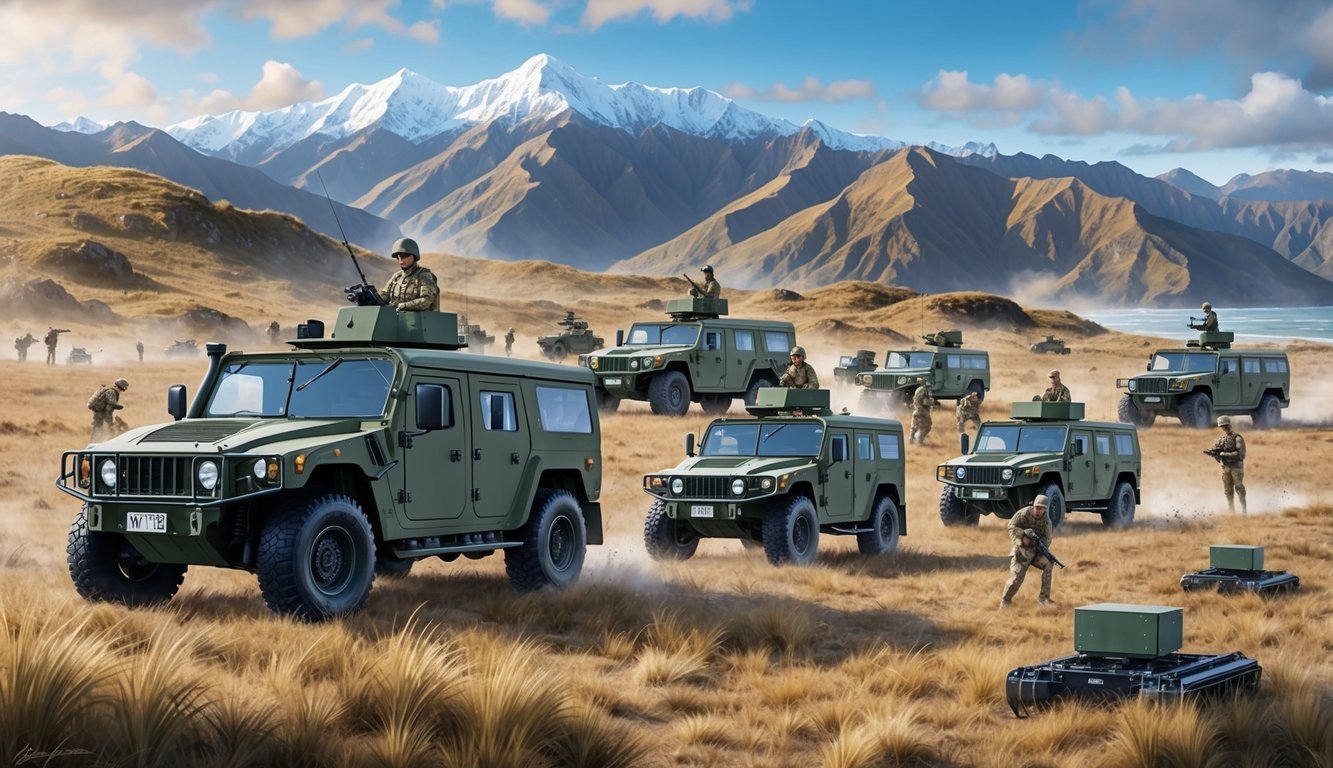
As New Zealand’s military navigates evolving threats and resource constraints, it adapts its focus for the future.
Cybersecurity, budgetary challenges, and modernization efforts are redefining defense priorities.
#### Cybersecurity and Emerging Threats
Cybersecurity has become a primary concern for New Zealand’s defense strategy.
The NZDF is intensifying efforts to safeguard critical infrastructure and sensitive information against increasingly complex cyber threats.
Developing digital warfare capabilities forms part of the strategy to counter these emerging risks, encompassing the formation of specialized cyber units and investments in cutting-edge technologies.
The NZDF is also attentive to emerging threats like autonomous weaponry and artificial intelligence and is exploring how to leverage and defend against such advanced technologies.
#### Fiscal Constraints and Policy Debates
Budgetary restrictions are influencing New Zealand’s military preparedness and modernization ambitions, fueling discussions on defense spending and resource allocation.
Some advocate for increased funding to meet new security threats, while others call for reallocating resources to non-military sectors.
Important discussions revolve around balancing traditional combat capabilities with new technological investments, regional versus global defense commitments, and aligning military expenditures with broader national security objectives.
These debates are critical in shaping how the NZDF evolves to satisfy its commitments under the Defence Act of 1990 and the Treaty of Waitangi.
#### Reforming for a Modern Defence Posture
The NZDF is undergoing substantial reforms aimed at creating a more agile and technologically sophisticated force.
Efforts are in place to streamline command frameworks and refresh training initiatives.
Recruitment and retention of skilled personnel, particularly in high-tech sectors, remains a priority.
The military is also focused on enhancing its diversity to better reflect New Zealand’s population within its ranks.
Ongoing modernization of equipment and facilities continues, though constrained by budgeting challenges.
Key areas of focus include upgrading naval and air assets, enhancing special forces capabilities, and optimizing logistics and support systems.
These reforms aim to ensure that New Zealand maintains a combat-ready force capable of addressing evolving security threats both domestically and overseas.
### Frequently Asked Questions
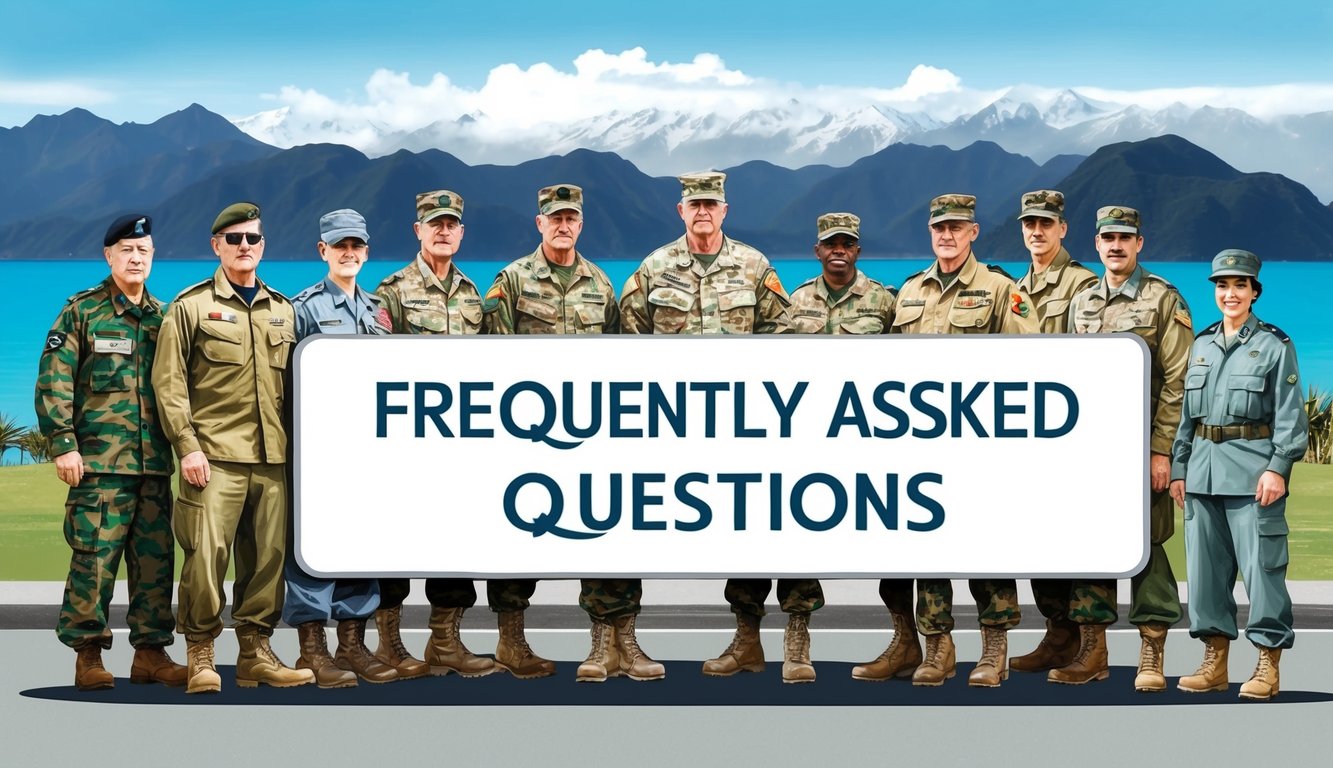
As prospective recruits look into joining New Zealand’s military, many questions arise regarding salaries, equipment, opportunities, and more.
#### What are the current salary ranges for the New Zealand Army?
Salaries for the New Zealand Army vary based on rank and experience.
Entry-level privates can expect to earn approximately NZ$49,000-$55,000 annually, while officer cadets receive about NZ$35,000 during training.
Higher ranks such as sergeants can earn between NZ$70,000-$90,000 yearly, with top officers exceeding NZ$100,000 per year.
#### How does the New Zealand military’s strength compare globally?
Although relatively small, New Zealand’s military is well-equipped.
It ranks approximately 80th globally in terms of active personnel, with around 9,400 troops.
The NZDF focuses on peacekeeping, disaster relief, and regional security rather than large-scale combat operations.
#### What type of equipment is currently utilized by New Zealand’s military forces?
The NZDF employs modern equipment tailored for its missions.
The Army utilizes light armored vehicles, artillery, and helicopters, while the Navy’s fleet includes frigates, patrol vessels, and a multi-role vessel.
The Air Force operates transport aircraft and maritime patrol planes.
#### Can you list the fighter jets in service with the Royal New Zealand Air Force?
The Royal New Zealand Air Force does not currently operate any fighter jets, as its combat aircraft capacity ended in 2001 when the A-4 Skyhawks were retired.
The RNZAF now focuses on transport, maritime patrol, and helicopter operations to fulfill its mission profile.
#### What is the annual budget allocated to New Zealand’s military operations?
New Zealand’s defense budget for 2024 stands at approximately NZ$4.3 billion, which represents around 1.5% of the nation’s GDP.
This budget encompasses personnel costs, equipment acquisition, maintenance, and operational expenses across all three branches of the NZDF.
#### Are there opportunities for overseas applicants in the New Zealand Defence Force?
Indeed, the NZDF accepts some applications from overseas candidates.
However, applicants must be New Zealand citizens or permanent residents to enlist.
Certain roles may have additional citizenship requirements, with the NZDF actively recruiting from countries with comparable military training, such as the UK and Canada.

